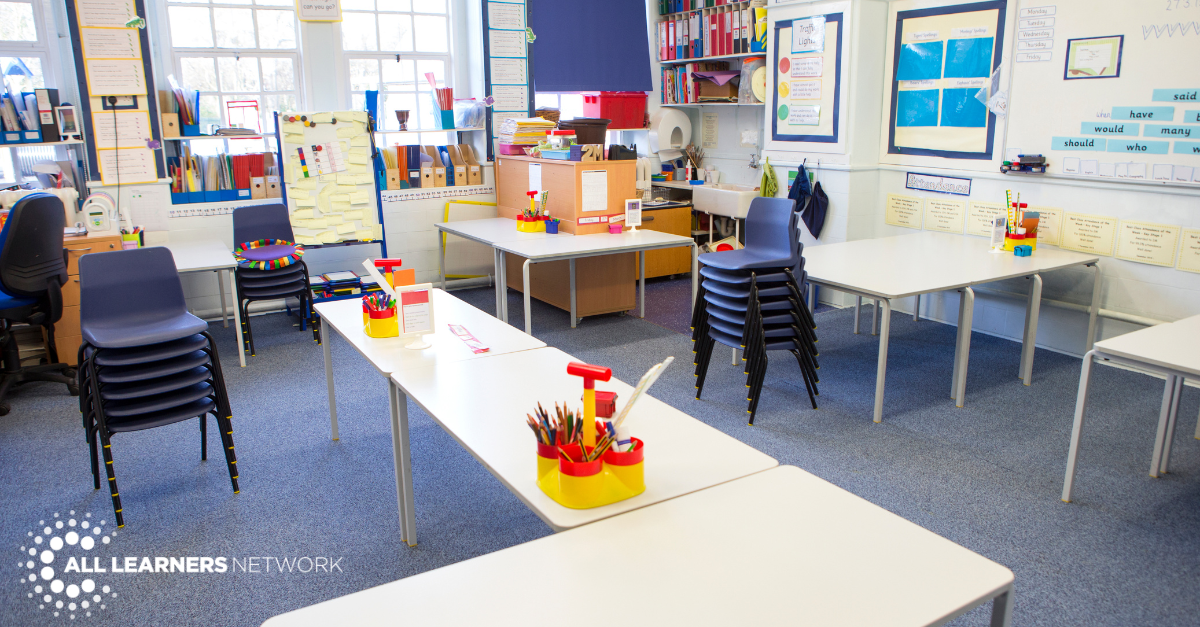
Setting Up Your Math Classroom Environment to Include All Students
Published: August 30, 2024
An educator's classroom environment, if designed intentionally, will support the inclusion of all students. An environment that is designed to provide freedom of choice and honors student voice can support all students as they engage in rich mathematics. The learning space should function as a productive co-teacher. Through proactive design the environment encourages collaboration, facilitates access and engagement and supports differentiation.
So how do educators facilitate impactful classroom design?
Throughout your own classroom design process, consider these questions and big ideas:
1. Does the classroom space promote collaboration?
In many classrooms students are front or teacher facing. To shift ownership and promote students as active decision makers, educators should adjust the focus to interactive and creative work spaces for students to collaborate and problem solve, including: grouping desks and tables to be peer facing, allow for students to find a corner on the floor or standing room, and utilize vertical dry erase surfaces. Students should be able to move about the classroom to access physical space, tools, peers and materials that empower them to try different models and strategies to make sense of and persevere throughout the problem solving process. By positioning students as collaborative partners they learn to support each other through the sharing of ideas and questions, successes and challenges. This type of learning space requires the establishment of clear routines and the management of materials where the focus is on students developing choice making strategies that encourage their development as expert learners. This takes time, intentional practice and self and group reflection by educators and students. The classroom layout can empower students through collaboration and decision making, creating students who seek action, are motivated and resourceful.
2. Do students have a sense of ownership over how, when and where to access models and strategies to help them as mathematicians and problem solvers?
Open access to explore with models of their choice allows students the flexibility to engage, struggle and succeed. This accessible and inclusive environment allows students to proactively choose how they solve problems and develop the metacognitive skills to plan for productive struggle. Learners' preferences must be honored and respected for students to develop intrinsic motivation and methodologies for solving complex problems independently from adults. Facilitating organized systems for classroom materials and learning spaces establishes access for all students. With this design, natural differentiation occurs through choice. Implicit in these design choices is the critical message that students have the capability of figuring out problems on their own. In the absence of freedom of choice, dependence on educators develops through learned helplessness. The environment should elicit curiosity, collaboration and creativity where students have choice in how they express their understanding of a mathematical concept.
3. When the walls of the classroom are examined is it clear to any observer that students are engaged in the environment?
Incorporating open work spaces on various surfaces for students to problem solve welcomes collaboration around various models and strategies. Educators must share and record student ideas publicly, naming students’ ownership of their models and strategies and asking peers to make sense of and compare different ways to solve the same problem. This can naturally be done throughout the ALN balanced math block, in particular, during Launch and Closure. What students create and interact with will become an ongoing and productive reference tool for independent problem solving. When the walls of the room reflect their differentiated and accessible thinking they receive the message that their ideas have value and are productive problem solving methods. Students will naturally ‘show their work’ when it holds a larger collaborative and social purpose outside of a grade or checklist. Intentionally publicizing student work engages students in flexible thinking and discourse that celebrates choice making.
The design of the classroom environment expresses an educator's mindset. If educators believe students should freely access flexible models and strategies to solve complex rich tasks, the environment should reflect this ownership, access and expectation. An interactive and accessible environment upholds and celebrates student capabilities and competencies as productive and independent mathematicians. It is free of barriers to access. Students’ differentiated problem-solving models and strategies are valued and documented in a classroom community that is student centered and honors creativity, joy, productive struggle and collaboration.
Click here for the printable version.
What Now?
1. Watch the recording of our August 2024 workshop, Setting Up Your Math Classroom to Include All Students.
2. Read our blog “Establishing Classroom Culture” to even better facilitate an inclusive community.
3. Bring All Learners Network (ALN) into your school or district for embedded professional development.

All Learners Network is committed to a new type of math instruction. We focus on supporting pedagogy so that all students can access quality math instruction. We do this through our online platform, free resources, events, and embedded professional development. Learn more about how we work with schools and districts here.




